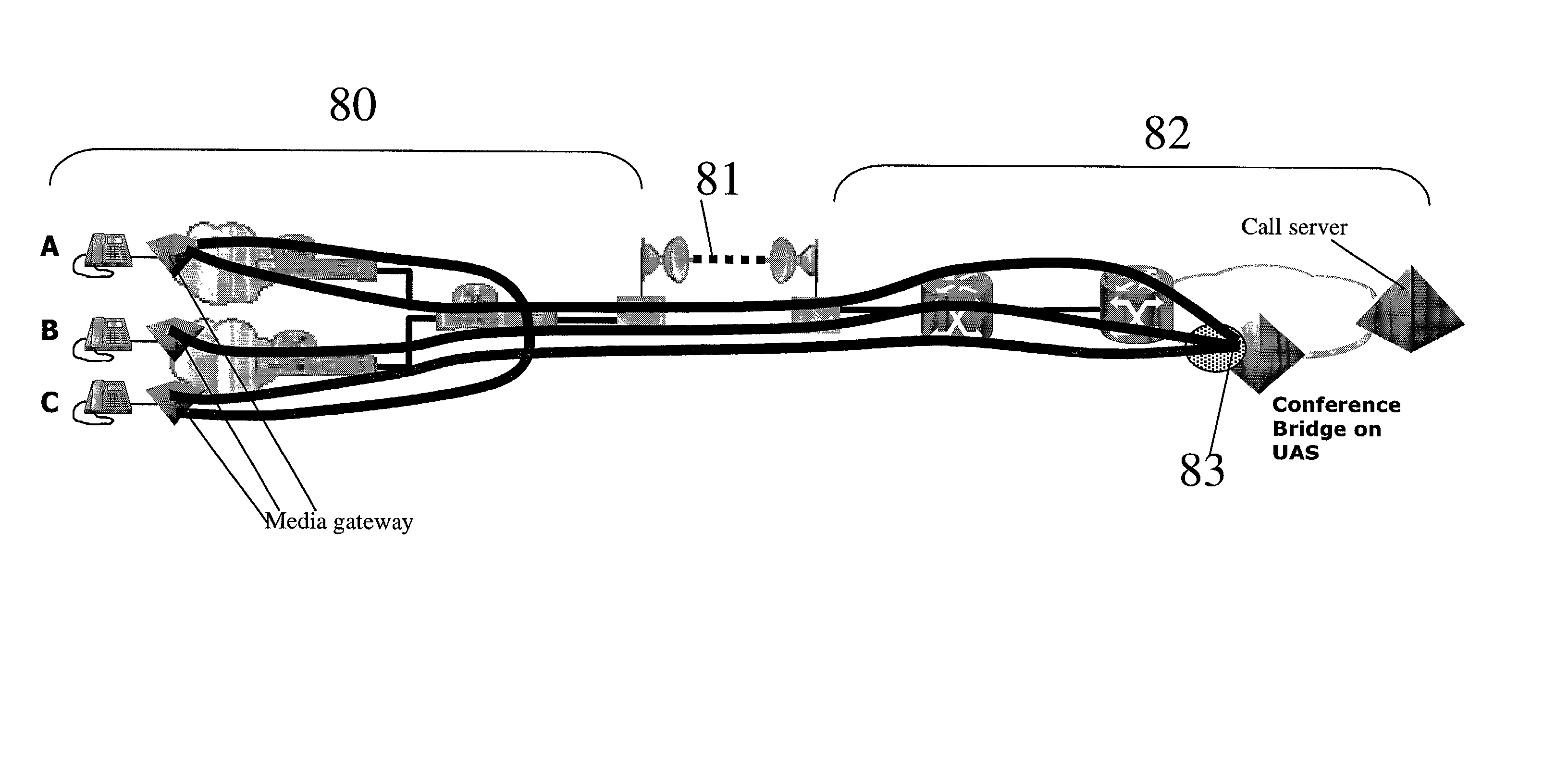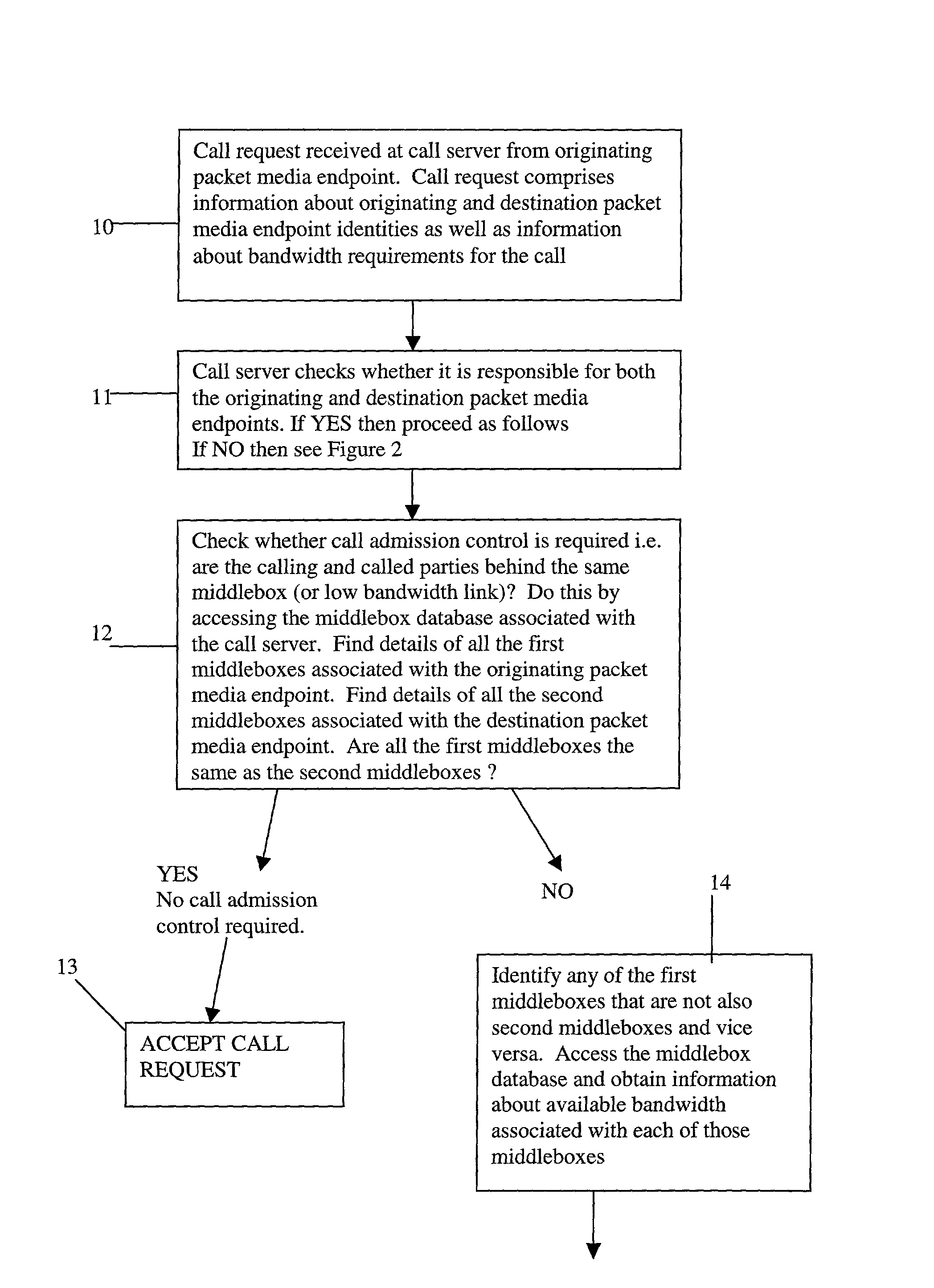Admissions control in a connectionless communications network
a technology of communication network and access control, applied in data switching networks, frequency-division multiplexes, instruments, etc., can solve the problems of deterioration in the quality of service for all services provided, severe impact, and significant problem of access control, and achieve the effect of cost-effective and simple implementation
- Summary
- Abstract
- Description
- Claims
- Application Information
AI Technical Summary
Benefits of technology
Problems solved by technology
Method used
Image
Examples
Embodiment Construction
[0054] Embodiments of the present invention are described below by way of example only. These examples represent the best ways of putting the invention into practice that are currently known to the Applicant although they are not the only ways in which this could be achieved.
[0055] The term "low bandwidth link" is used to refer to a connection between two nodes in a communications network, where the capacity of the link is less than the capacity required should all entities connected to one end of the link issue communications over that link simultaneously. Typically there is only one such low bandwidth link between the two nodes referred to immediately above although this is not always the case.
[0056] The term "packet media endpoint" is used to refer to a terminal that is suitable for connection (possibly indirectly) to a middlebox or to refer to a node via which terminals access a middlebox (e.g. a media gateway).
[0057] The term "call agent" is used to refer to a node which is abl...
PUM
 Login to View More
Login to View More Abstract
Description
Claims
Application Information
 Login to View More
Login to View More - R&D
- Intellectual Property
- Life Sciences
- Materials
- Tech Scout
- Unparalleled Data Quality
- Higher Quality Content
- 60% Fewer Hallucinations
Browse by: Latest US Patents, China's latest patents, Technical Efficacy Thesaurus, Application Domain, Technology Topic, Popular Technical Reports.
© 2025 PatSnap. All rights reserved.Legal|Privacy policy|Modern Slavery Act Transparency Statement|Sitemap|About US| Contact US: help@patsnap.com



